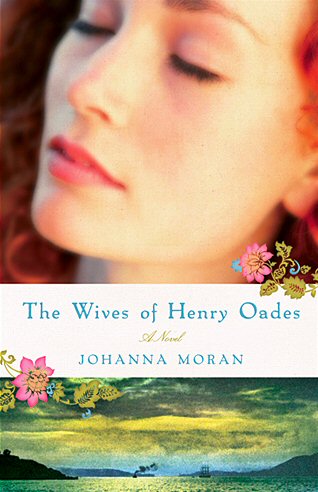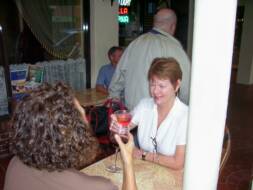3. Margaret refers to the quid pro quo of her faith: “One takes communion every single Sunday for thirty- odd years. One humbles herself, embraces every last dogmatic note, and no good comes of it, no help when one needs it most.” Nancy, too, feels as though she has been cheated. Have people’s expectations of contemporary Christianity changed?
4. Margaret teaches her children lessons every evening: grammar, mathematics, and etiquette. “It was her duty to prepare them for their return. She refused to accept the possibility that they might grow old and die a natural
death here. Margaret never once considered setting her children free to be slaves.” She refuses to allow her children to live the life before them, planning, instead, for the life she hopes they will claim. Why does Margaret remain so steadfast during their captivity?
5. Henry finally accepts that his loved ones are dead, and eventually he marries another woman. What is the catalyst for this turning point? Do you agree with his actions?
6. Why do Margaret and the children receive such a chilly welcome when they finally return to the village from the Maori camp?
7. Several matches proposed in this book seem made for convenience: Portia and Henry, Margaret and Captain
Fisk of the Sacramento, and even Nancy and Henry, at least in the beginning. Do you agree? If so, why do you
think that is?
8. At what point do Margaret and Nancy start to get along? What sparks their friendship?
9. Though it’s a wretched situation for everyone involved, which Mrs. Oades do you think suffers most? With
which woman do you most identify?
Johanna Moran: More than a half century ago, my father, a law professor, came across an abstract on the Oades case and showed it to my mother, who was attempting to write short fiction in her nonexistent spare time. She was intrigued and gave thought to fleshing out the story, but that’s as far as she got. She might have had three kids down with mumps that week, or a spectacular birthday party for twins to host. In any event, five
children and writing never did mesh. My mother squirreled the abstract away, perhaps thinking she’d get to it eventually. She gave it to me about ten years ago. I was drawn in immediately and went from there.
Fascinatingly, I’ve since learned from an Oades family descendant that the case, which was reported on in the New York Times and made its way into several legal texts, including Readings in American Legal History (1949)—70 plus years later!—may actually have been a hoax. There’s some debate about whether the story was in fact invented by a California newspaper as a way for them to illustrate a loophole in the law that would have permitted bigamy.
RHRC: What in particular about the abstract drew you in? Did you and your mother discuss the narrative at all while you were writing?
JM: Well, I considered my own marriage. It’s my first, but it’s my husband’s second. How outraged would I have been in Margaret’s shoes? (She who didn’t want to leave England in the first place.) My mother, two sisters, and I have discussed the narrative at length, from both women’s perspective and from Henry’s, never arriving at a perfect solution.
RHRC: What aspect of the story did you find most challenging to fictionalize?
JM: The greatest challenge was knowing Henry. I regularly interviewed my husband and other men. “Don’t tell me what you think I want to hear,” I’d say. “Tell me what you’d really do/say under these circumstances.” Of course, no two men had the same answer. I came away with a mix of responses. My Henry Oades is a bit of a composite. I like and respect him. I also feel sorry for him at times.
RHRC: One of the things that’s so compelling about your novel is how sympathetic the three main characters are: The reader can relate to each of them and understand their predicament and the choices they make— even if we don’t always agree with them. While you were writing the novel, who did you feel most connected to or sympathetic toward— Margaret, Henry, or Nancy?
JM: Easily, Margaret. She’s endured the most and is more entitled to Henry than Nancy. But then that’s one first wife talking about another. Others will surely feel differently.
RHRC: How do you think the three Oadeses would have fared today?
JM: Good question. The women certainly would have had more options in the twenty-first century. Either one might have divorced without the social stigma attached. They might have gone on to fulfilling careers, in a different city of their choosing. They might have enjoyed the freedom of life on their own, or found new love(s), with or without the benefit of marriage. But that’s assuming one or the other was willing to give up Henry, and that’s not the case. Both consider him their rightful, lawful husband. A modern world would not have mitigated
the heartache.
RHRC: There was a scene that didn’t make it into the final draft— one in which Henry gives Nancy and Margaret a rather unusual gift, and it takes the women a bit of getting used to. Tell us about the earth closet and where that idea came from.
JM: I laugh thinking about that scene. I came across the earth closet in my reading. It was essentially a human litter box, consisting of a commode, pail, and dirt. Its popularity was very short lived. In the original draft, when an earthquake destroys their outdoor privy, Henry surprises the women with this indoor contraption. Nancy is particularly horrified. American women took some time getting used to the idea of any sort of indoor toilet. The “necessary” was associated with germs and disease, and naturally belonged outside.
RHRC: The Wives of Henry Oades seems like quite a wonderful tribute to a wide swath of your family— writers and lawyers. And in your previous career you traveled extensively, didn’t you?
JM: That’s right. My grandfather was a district judge; my father was a professor of law. I’ve long had a fascination with the law because of them. The love of writing came from both parents. My father was a published author, as was my maternal grandmother. Too restless to spend another four years in a classroom, I began my flying career at nineteen, first for National Airlines, a regional carrier, then for Pan Am. They were exhilarating years for the most part, interspersed with union strikes and the rare close call. I live a little more quietly now
with my husband, John— for whom, in Margaret’s or Nancy’s situation, I would have fought tooth and nail.
RHRC: Had you been to any or all of the three locations the novel takes place in (London, England; Wellington, New Zealand; Berkeley, California) before you began writing? Did you visit afterward? Do you think your travel experience helped you create vivid portraits of each city?
JM: My husband and I visited all of the settings in the novel before I began writing. So, yes, actually being in a place is a huge help in creating a visual. We’ve been back to England and California since. We walked down Polk Street where Dr. McTeague’s dental parlor is located. And we ate at the Cliff House and drank champagne at the Palace Hotel, though not as much as Margaret and Nancy did that day.
RHRC: Of the places you’ve traveled, where has been your favorite and why?
JM: For natural grandeur— hands down: New Zealand, particularly South Island. It is a spectacular country, and the people are lovely. An Air New Zealand pilot invited us to dinner simply because we were new to the place. I’d love to go back. And I will always hold San Francisco dear. John and I honeymooned there. It is one of the most romantic cities in the country.
RHRC: Can you tell us a little about what you are working on now?
JM: I’m working on a story about a friendship between two nineteenth-century prostitutes, one of whom was in fact murdered by Abraham Rothschild.


